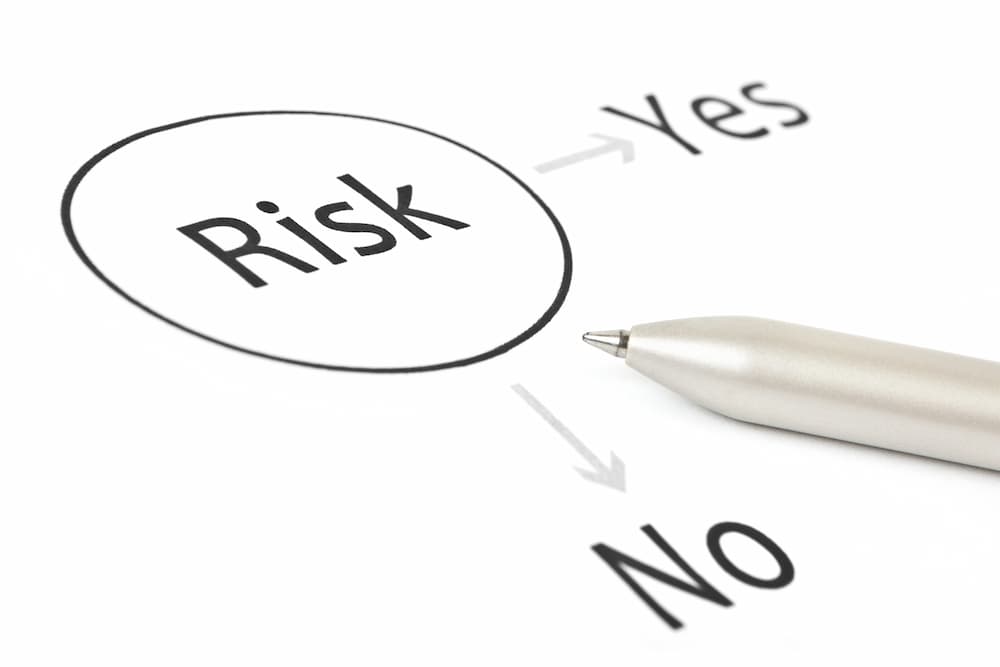
Event risk management planning refers to the process of assessing and mitigating risks associated with hosting an event. It involves identifying potential risks, evaluating their likely impacts, developing strategies and procedures for dealing with them, and putting plans in place to reduce or eliminate their occurrence. Proper event risk management planning is essential for events of any size, from small conferences to large-scale festivals.
When it comes to creating a successful event risk management plan, it’s important to understand the types of risks that events face. To help companies address the risk associated with their events, the best practice is to use a triage system. This system can help identify and evaluate risks in an orderly manner so that suitable countermeasures can be applied.
Stage One: Adapt
The first stage of event risk management planning is to adapt. This involves understanding the event and its potential risks before any steps can be taken to mitigate them. Companies should identify the key stakeholders involved in the event, as well as their responsibilities and objectives. They should be aware of the various stakeholders’ interests and concerns, as well as any regulations or laws that may apply to the event.
Once a basic understanding of the scope, scale, and risks associated with an event has been established, it’s time to assess these risks. During this stage, planners will need to evaluate each risk in terms of its likelihood and severity.
Conduct a Risk Assessment
The first step is to determine which type of risks are most likely to affect your event. Risks can be divided into three categories based on severity: low, medium, and high. Low-risk factors are those that don’t significantly affect the success or failure of your event; medium-risk factors are those that could significantly disrupt normal activities; and high-risk factors are those that would greatly jeopardize the launch or continuation of your event.
Categorize Your Potential Risks
Once you have identified the risk levels, create a list of potential hazards in each category by asking yourself questions about what sort of situations may arise during execution. The hazard list should include specific risks such as weather issues, terrorism threats, political unrest, IT security breaches, and personnel conflicts as well as more general risks like power outages or financial insolvency. While some of these threats may never materialize, it’s important to prepare for them in advance so you can respond quickly if they do occur.
Prioritize Your Risks
Next, you will need to prioritize the risks on your list according to likelihood and impact. The probability/impact matrix will allow you to easily see which risks will require immediate attention and which ones can wait until later stages in your planning process when more information is available. It also serves as a useful tool when allocating resources between risk management initiatives and general operations tasks such as marketing or operations planning.
Review Refund Policies and Financial Implications
In some cases, it’s simply better to reschedule or repeat your event rather than risk a potential disaster. If the risks are too great, you may decide to switch to an online format or postpone the event until the risk has dissipated. In either case, it’s important to communicate any changes to attendees and vendors in a timely manner so they can adjust their plans accordingly.
Choose To Reschedule or Pick Another Format
Once you have identified and assessed potential risks, you may decide that it’s better to reschedule or switch to a different format. For example, if the threat of a significant weather event is looming, you may want to consider postponing your event until the risk has passed. Alternatively, if the risk of terrorism or civil unrest is high, you may want to switch to an online format so attendees can participate without putting themselves in harm’s way.
No matter which option you choose, be sure to communicate any changes to attendees and vendors as soon as possible so they can make the necessary adjustments. Additionally, clearly outline any refund terms in case people decide not to attend your event due to the change in format or timing.
Communicate Changes As They Happen
As a meeting or event planner, it’s important to know how to communicate event changes as they happen. A big part of this is being proactive about informing any stakeholders of any changes or updates. A successful event requires effective communication. In this article, we’ll discuss ways to communicate event changes as they arise in an efficient and professional manner.
Send Out Written Notices & Emails
Written notices and emails are the first steps in communicating event changes to stakeholders and attendees. This can be done through email or other notification services like text messages, depending on the situation and who the intended recipient is. Make sure the notice contains pertinent information about the change or update and provide suitable contact information for any questions.
Hold Meetings and Promote Open Communication
Whether virtually or in person, it’s important to hold meetings with all stakeholders on a regular basis (e.g., weekly) so that everyone is aware of pending changes and/or updates that may affect their participation in the event. Help promote open communication by encouraging stakeholders to ask questions and provide feedback during each meeting.
Create Visual Elements
Another way to help ensure that everyone involved in an event knows about its updates or modifications is by creating visual elements like posters, banners, infographics, etc., which will make known upcoming developments easy for all attendees to view at a glance – without having read any emails or physical notifications beforehand. This can also work as a backup just in case someone misses out on receiving materials due to incorrect contact information being given out initially (or if they simply didn’t read them).

Stage Two: Evolve
Once you have assessed the risks associated with your event and developed emergency procedures, it’s important to create a plan for the future. This will ensure that your organization is prepared if similar risks arise in the future.
When developing a plan for the future, be sure to consider both short-term and long-term strategies. Short-term strategies might include establishing new protocols and processes in order to address any immediate needs or concerns that may arise. Long-term strategies can involve creating policies and procedures that will be in place for future events and planning ahead to mitigate potential risks.
Create a Plan for the Future
When creating a plan for the future, be sure to consider both proactive and reactive strategies. Proactive strategies involve anticipating and preparing for potential risks before they arise by doing things such as conducting regular risk assessments, obtaining insurance coverage, and training staff in emergency response procedures. Reactive strategies involve responding to risks swiftly when they do arise by having an Emergency Action Plan in place and implementing any necessary changes quickly.
Develop Policies and Procedures
Having protocols in place is essential if something goes wrong during your event. Make sure that everyone involved knows what to do in case of an emergency so that they can take action quickly and efficiently if necessary. Part of this should involve delegating roles within your team so that each person has a specific job to do when something unexpected happens.
Provide Adequate Training For Staff And Volunteers
An important part of creating policies and procedures around Event Risk Management is providing adequate training for staff members or volunteers who will be on-site during the event so they know what protocols they must follow in different scenarios, such as extreme weather conditions or fire demonstrations that went wrong. Ensure that everyone involved understands their role well before anything happens on site, so everyone knows what needs to be done if something does go awry during an emergency situation.
Invest in Event Tech
To plan and successfully host an event requires a thorough risk management strategy. Event technology can provide considerable help when it comes to managing the safety risks associated with events. This article outlines the advantages of investing in event tech for your next event and covers specific areas where investment is most beneficial.
Embrace Automation Where Possible
Automation is essential when it comes to managing large crowds so investing in digital solutions that support self-regulated processes will be invaluable for keeping everyone safe. A prime example is an automated contactless check-in system which cuts down the manual effort required from security personnel at entrances by eliminating long queues; automatically scanning tickets; assigning virtual wristbands equipped with labeling information or accessibility details; and maintaining health records for every attendee for contact tracing if necessary.
Prioritize Cloud Security Features
Event tech also helps ensure cloud security features are prioritized, as data protection/breach prevention is paramount if personalized marketing campaigns need to be sustained during challenging times. Such systems allow hosting environments in remote locations (e.g., on cloud servers) that offer better scalability, cost savings, uptime rates, resiliency threshold access control, etc.), to ensure customer data is secure throughout their event’s life cycle.
Stage Three: Evaluate
It’s important to review your policies for event risk management plans regularly so that you can keep up with any changes or updates relevant to safety protocols after periods of evaluation following past events or activities run through your organization. This way, you can make sure everything remains up-to-date in terms of safety/risk measures taken by you as a professional to handle it well every time.
Streamline Your Event Risk Management with Miller Tanner Associates
Whether you are a seasoned event professional with limited in-house resources, or a company in need of an event risk management strategy, one way to simplify event risk management is by using the services of an experienced event consultant like Miller Tanner Associates (MTA). With MTA’s help, you can easily streamline your event risk management processes and be better prepared. To read our risk management success stories, click here.
Miller Tanner Associates is a leading provider of event risk management services in the United States, specializing in providing cost-effective and comprehensive solutions for creating, managing, implementing, and tracking detailed event plans. The company prides itself on being able to provide both organizational and technical expertise across all types of events – from small conferences to large-scale international celebrations – allowing for more effective decision-making when it comes to managing potential risks before, during, or after an event. Relying on the extensive know-how provided by experts such as Miller Tanner Associates’ team when preparing for your next event means that potential risks are eliminated before they become reality.
Image Credits: Olga Danylenko – PanuShot / Shutterstock

